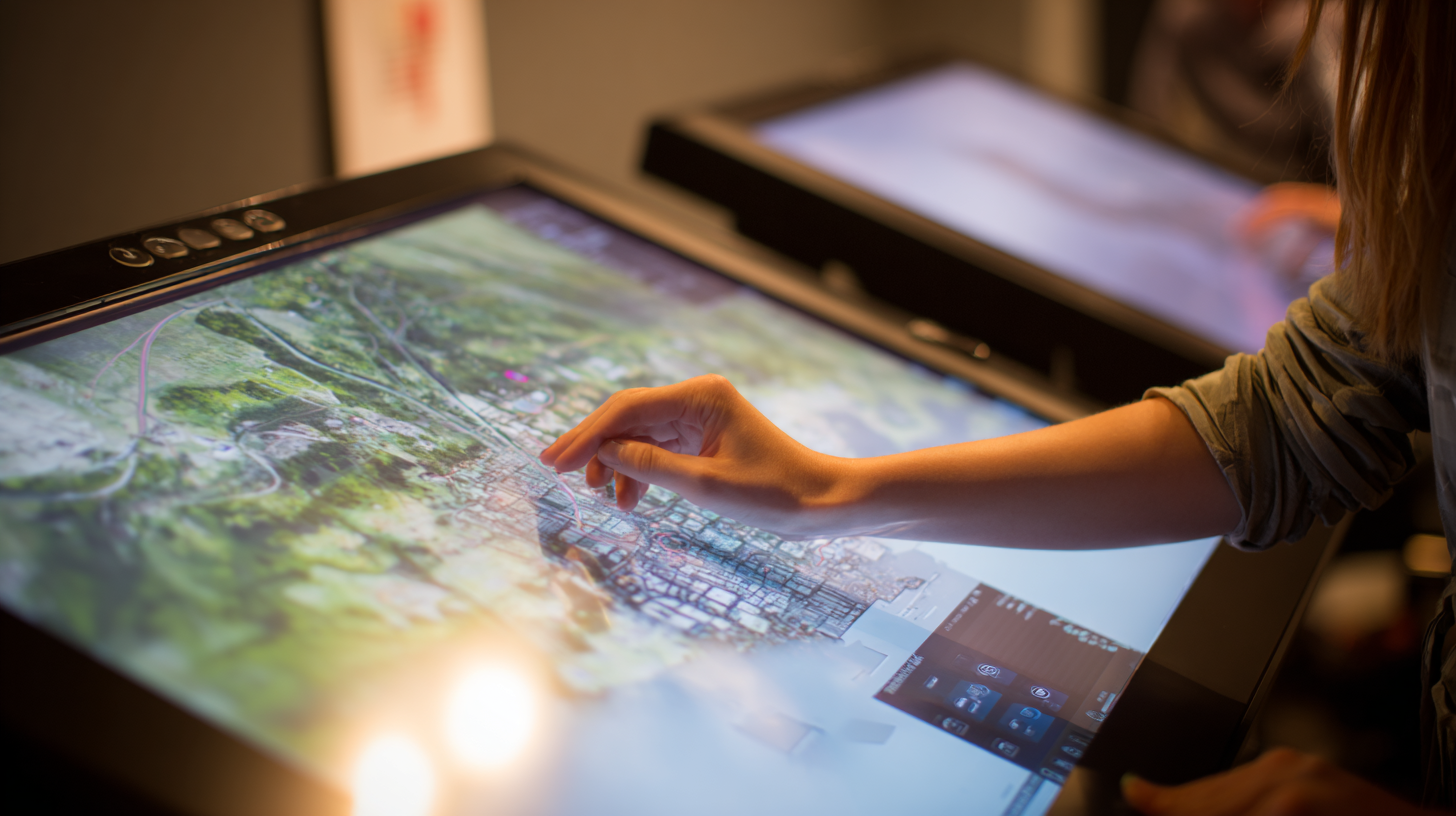The Evolution of Large Touch Screen Monitors Transforming Interactive Experiences in Business and Education
The rapid advancement of technology has significantly transformed the way businesses and educational institutions engage with their audiences, with the large touch screen monitor emerging as a pivotal tool in this evolution. These innovative devices not only enhance interactivity but also foster collaborative learning and agile decision-making in professional settings.

With their expansive display capabilities and responsive touch functionality, large touch screen monitors provide a seamless integration of digital content, enabling users to visualize complex information and interact with applications in real-time. As we explore the evolution of these monitors, we will uncover their impact on interactive experiences, highlighting how they are reshaping presentations, workshops, classrooms, and boardrooms alike.
From facilitating remote collaboration to enhancing student involvement, large touch screen monitors are redefining how we communicate and learn in an increasingly digital world.
Understanding the Technological Advancements in Large Touch Screen Monitors
The rapid evolution of large touch screen monitors has significantly transformed interactive experiences across various sectors, particularly in business and education. Understanding the technological advancements that have fueled this evolution is essential to comprehend their profound impact. Key innovations, such as improved touch sensitivity and enhanced display resolution, have enabled these monitors to deliver a more responsive and visually appealing user experience. Additionally, the integration of advanced software solutions and collaborative tools has made it easier for users to engage, share, and communicate effectively.
Furthermore, large touch screen monitors now come equipped with features like multi-user capability and seamless connectivity, which enhance collaborative efforts and learning in educational environments. These advancements allow educators to create interactive lessons that cater to diverse learning styles, making knowledge more accessible and engaging to students. In business settings, the ability to display real-time data and facilitate interactive presentations fosters creativity and productivity, enabling teams to brainstorm and strategize more effectively. As technology continues to progress, the role of large touch screen monitors in shaping interactions will undoubtedly expand, providing new avenues for collaboration and engagement.
The Adoption Rate of Large Touch Screen Monitors in Business and Education (2018-2023)
This bar chart illustrates the rising adoption rate of large touch screen monitors in business and education sectors from 2018 to 2023. The data demonstrates a significant increase in usage, reflecting the technological advancements that enhance interactive experiences.
Exploring Applications in Business Settings for Enhanced Collaboration
Large touch screen monitors have dramatically transformed collaboration in business settings, allowing teams to engage more effectively in brainstorming and project management. These interactive displays enable real-time sharing of ideas and concepts, as participants can seamlessly annotate presentations, manipulate data, and illustrate points with intuitive gestures. By fostering a more dynamic environment, businesses can encourage creativity and innovation, ultimately leading to better decision-making processes.
Furthermore, the integration of large touch screens into conference rooms and collaborative workspaces has revolutionized how teams communicate. With capabilities such as video conferencing and content sharing across devices, remote participants can feel more included and engaged. This convergence of technology not only enhances the workflow during meetings but also supports hybrid working models, making it easier for employees to collaborate, regardless of their physical location. As organizations continue to embrace these interactive monitors, the potential for increased productivity and teamwork will only grow, redefining the way we approach business collaboration.

Revamping Classroom Environments through Interactive Learning Tools
The integration of large touch screen monitors in classroom environments is revolutionizing interactive learning tools, fostering a dynamic educational experience. According to a report from MarketsandMarkets, the global interactive displays market is projected to reach USD 16.1 billion by 2025, growing at a CAGR of 22.5% from 2020. This rapid growth underscores the increasing adoption of technology in education, particularly the shift toward collaborative learning spaces that enhance student engagement and participation.
These interactive displays facilitate a more immersive learning environment, allowing educators to present information in a visually stimulating manner. Research from the New Media Consortium shows that nearly 40% of educators believe that using interactive technology enhances student collaboration and creativity. Features like multi-touch functionality enable several students to interact with content simultaneously, promoting teamwork and engagement through shared experiences.
As classrooms evolve into technology-rich environments, large touch screen monitors play a pivotal role, turning traditional lessons into interactive, collaborative endeavors that prepare students for the demands of the modern workforce.
Integrating Touch Screen Monitors into Educational Curricula Effectively
Integrating large touch screen monitors into educational curricula represents a significant shift in the way educators engage with students. These monitors facilitate interactive learning experiences, allowing for real-time collaboration and hands-on activities that traditional teaching methods often lack. By embracing touch technology, educators can create a more dynamic classroom environment where students are not mere passive recipients of information but active participants in their learning journey.
Moreover, the versatility of touch screen monitors enhances various subjects, catering to diverse learning styles. Visual learners benefit from the engaging graphics and video capabilities, while kinesthetic learners can physically interact with educational content. In addition, the ability to incorporate multimedia presentations and interactive simulations can make complex topics more accessible. As schools continue to implement these technologies, ongoing training and development for educators are essential to maximize their potential and ensure that both teachers and students can leverage them effectively.
Assessing Future Trends in Touch Screen Technology for Engagement Improvement
As technology continues to advance, the role of large touch screen monitors in business and education is evolving, particularly in terms of enhancing engagement. According to a report by Grand View Research, the global touch screen technology market is projected to reach $100 billion by 2027, driven by increasing demand for interactive displays in various sectors. This shift is prompting organizations to adopt touch screen solutions that not only cater to traditional uses but also redefine how users interact with content.

To effectively harness the potential of touch screen technology, businesses and educational institutions should focus on several emerging trends. First, the integration of artificial intelligence (AI) can create personalized learning and engaging experiences. A study from MarketsandMarkets highlights that the AI in education market is expected to reach $6 billion by 2025, suggesting a significant opportunity for combining these technologies. Additionally, incorporating collaborative features in touch screen monitors can enhance teamwork and productivity by allowing multiple users to interact simultaneously.
Tips: When selecting a touch screen monitor, consider the screen size and resolution to ensure clarity and visibility for group settings. Moreover, ensure the device supports various applications to keep engagement levels high during presentations or lessons. Prioritize systems that offer seamless connectivity with other devices for a more integrated experience.